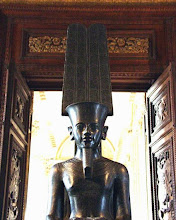Joan of Arc Relics Are Actually Egypt Mummy Remains, Research Reveals
 The charred bones that were long believed to be remains of St. Joan of Arc don't belong to the French heroine but are instead the remains of an Egyptian mummy, a new study has shown.
The charred bones that were long believed to be remains of St. Joan of Arc don't belong to the French heroine but are instead the remains of an Egyptian mummy, a new study has shown.
Philippe Charlier, a forensic scientist at the Raymond Poincaré Hospital in Paris, France, obtained permission last year to study the relics from the church in Normandy where they are housed.
The relics were said to have been retrieved from the French site where Joan was burned at the stake in 1431.
Charlier's team studied the relics—including a fragment of cloth and a human rib—under the microscope and subjected them to chemical tests.
Close inspection of the human rib showed that it had not been burned but may have been heated to create a blackened crust on the surface, Charlier said.
Meanwhile the fragment of linen cloth had a coating characteristic of mummy wrappings and contained large amounts of pine pollen.
"Pine resin was widely used in Egypt during embalming," Charlier explained, adding that pine trees did not grow in Normandy during Joan of Arc's time.
Final proof came from carbon-14 analysis, which dated the human remains to between the third and sixth centuries B.C.
Chemical scans of all the relics further suggested Egypt as the place of origin, as the profiles closely matched those of Egyptian mummies rather than burned bones.
"We were astonished to find [the bone] came from a mummy," he said.
Smelling the Evidence
In his analysis of the artifacts Charlier also used the rather unusual tactic of employing leading "noses" from the perfume industry.
"We wanted a professional nose to confirm the smell [of the relics] and identify what molecules [the smells] might be," Charlier said.
During blind smell tests, professional perfumers Sylvaine Delacourte and Jean-Michel Duriez each identified the aromas of burned plaster and vanilla when given samples of the relics.
The scent of burned plaster is consistent with Joan having been burned on a plaster stake, but the vanilla doesn't fit, Charlier explained.
"Vanilla usually indicates an embalming process," he said.
Anastasia Tsaliki, an expert in ancient diseases at Britain's University of Durham, said she was impressed with Charlier's detective work.
"It is a fascinating project and shows how forensic methods can be combined with tools used in archaeometry [the study of archaeological materials] and archaeobotany [the study of ancient plants] and osteology [the study of bones]," she told the journal Nature.
Joan of Arc: Warrior Saint
Joan's life in France was short but eventful.
Late in the Hundred Years' War—fought between France and England from 1337 to 1453—she claimed to hear voices from God telling her to recover her homeland from the English.
After many battles against the English she was captured, and in 1431 was burned at the stake in the French city of Rouen under the orders of an English duke (see map of France).
The putative relics surfaced in 1867 in a jar in the attic of a Paris pharmacy. They were labelled "Remains found under the stake of Joan of Arc, virgin of Orleans" and were officially recognized by the Vatican as being authentic.
The site where the relics were supposedly discovered gives Charlier a clue as to who might have created the elaborate fake.
"I think [the relic] was made during the 19th century, probably by a chemist or pharmacist," Charlier said.
Source






